Madagascar emerges as a realm of unparalleled diversity, boasting varied landscapes, a unique assembly of wildlife, and a deeply rooted cultural heritage that reflects a blend of African and Indonesian influences. This island nation, recognized for its cities rich in history and natural wonders, such as the renowned Avenue of the Baobabs and the UNESCO World Heritage site Ranomafana National Park, offers travelers a mosaic of experiences across its expansive geography.
The narrative of exploration in Madagascar is further enriched by the vibrant capital, Antananarivo, serving not only as a gateway to the nation but also as a microcosm of Madagascar’s blend of modernity and tradition. As this guide ventures through the top cities in Madagascar, it promises a journey through landscapes dotted with lemurs, baobab trees, and pristine beaches, and offers insights into the conservation of Madagascar’s endangered species, making it an essential compass for the discerning traveler.
Antananarivo: The Vibrant Capital
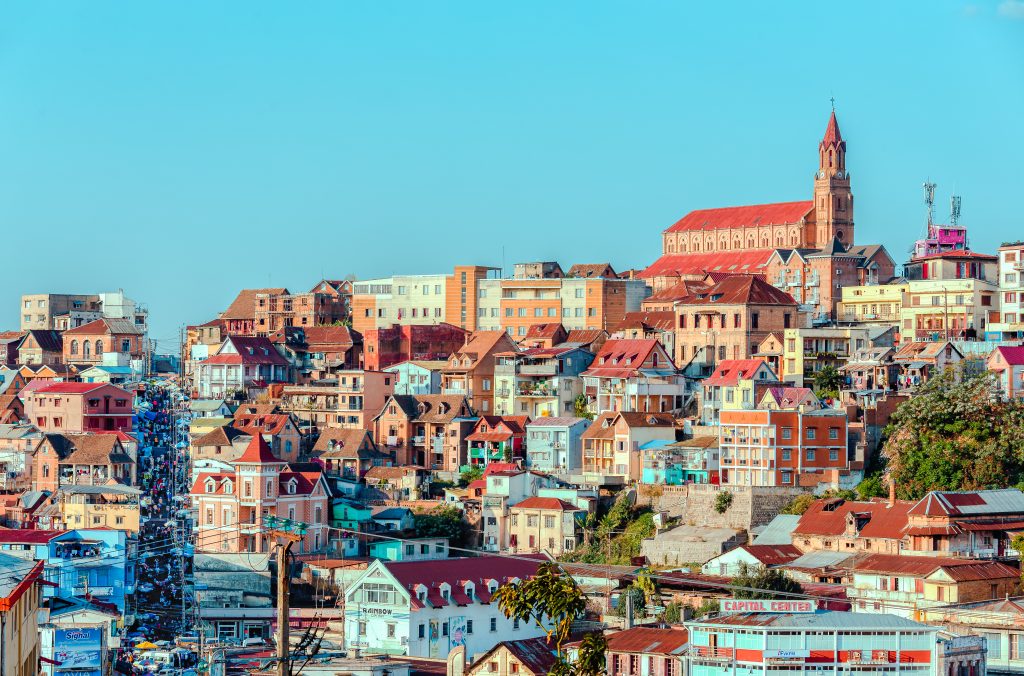
Antananarivo, often bypassed by travelers, is a city that encapsulates the essence of Madagascar with its vibrant cityscape, rich history, and breathtaking views. The capital is not just the political heart of Madagascar but also a cultural melting pot, home to the Merina, the island’s largest ethnic group, whose influence has shaped the city since the 17th century.
Key Highlights of Antananarivo:
- Historical Landmarks: The Rova of Antananarivo and Andafiavaratra Palace offer a peek into the royal heritage, while the Musée d’Art et d’Archéologie showcases archaeological treasures.
- Cultural Sites: The Royal Hill of Ambohimanga, a UNESCO site, holds great spiritual significance. Over 5000 churches, including the Gothic-style Andohalo Cathedral, dot the city.
- Natural Beauty and Leisure: The jacaranda trees’ purple bloom transforms the city every October and November. Lemurs’ Park, a short drive away, allows intimate encounters with Madagascar’s famed primates.
Despite its bustling nature, chaotic traffic, and pollution, Antananarivo remains a city rich in history and culture, offering unique shopping experiences, world-class cuisine, and a warm welcome from its residents. The city’s blend of French colonial architecture and traditional Malagasy culture, set against a hilly landscape, provides a unique backdrop for exploring Madagascar’s capital.
Avenue Of The Baobabs: Madagascar’s Iconic Trees
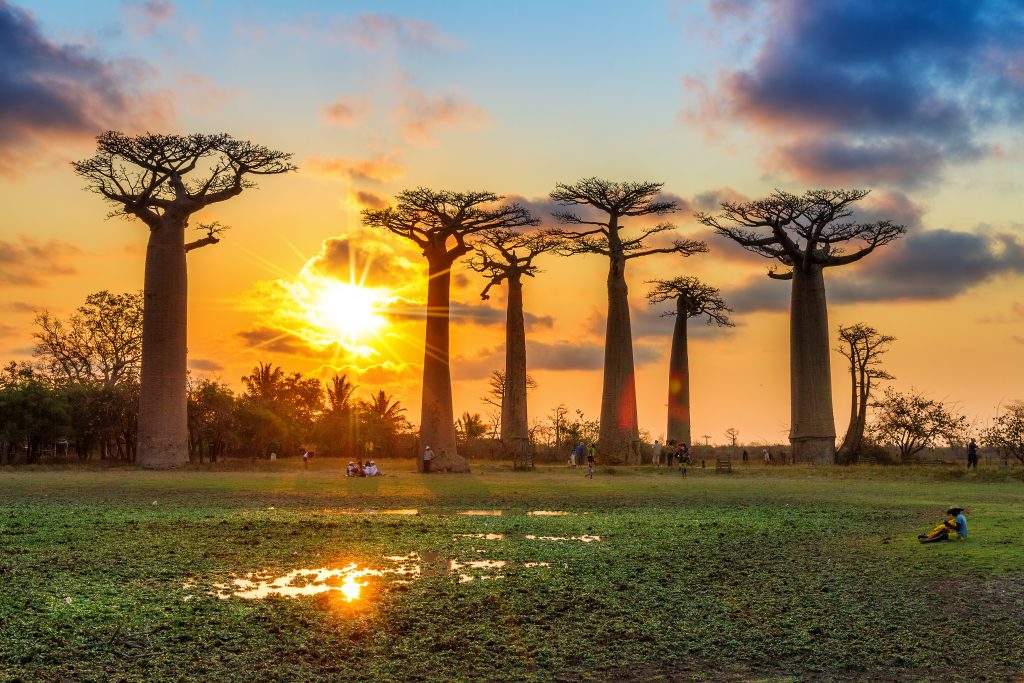
The Avenue of the Baobabs, a stretch of road between Morondava and the Kirindy Reserve, captivates visitors with its ancient, towering baobab trees. These trees, primarily Grandidier’s Baobabs, can reach up to 30 meters in height and live for around 2,800 years, presenting a majestic natural spectacle. The avenue itself spans 260 meters, flanked by 20-25 of these colossal trees, with additional baobabs scattered in the surrounding rice paddies and meadows. Despite the original forests’ clearance for agriculture, these baobabs have endured, thanks to their utility as a food source and for other uses.
Visiting the Avenue:
- Best Times: Sunrise and sunset offer the most favorable lighting for photography, making these times ideal for visits.
- Tourist Infrastructure: The area has no gate fees or visitor centers, emphasizing the avenue’s natural, unspoiled beauty. It’s advisable to arrange transportation for an early morning or late afternoon visit to experience the avenue’s full splendor.
- Supporting the Local Economy: While entry to the avenue is free, visitors are encouraged to support the local economy by purchasing souvenirs directly from the residents. Efforts are also underway to plant new baobabs near the avenue, ensuring the preservation of these iconic trees for future generations.
This unique location not only serves as a famous tourist attraction but also plays a vital role in the daily lives of locals, being used for transportation and other daily activities.
Nosy Be: A Tropical Paradise
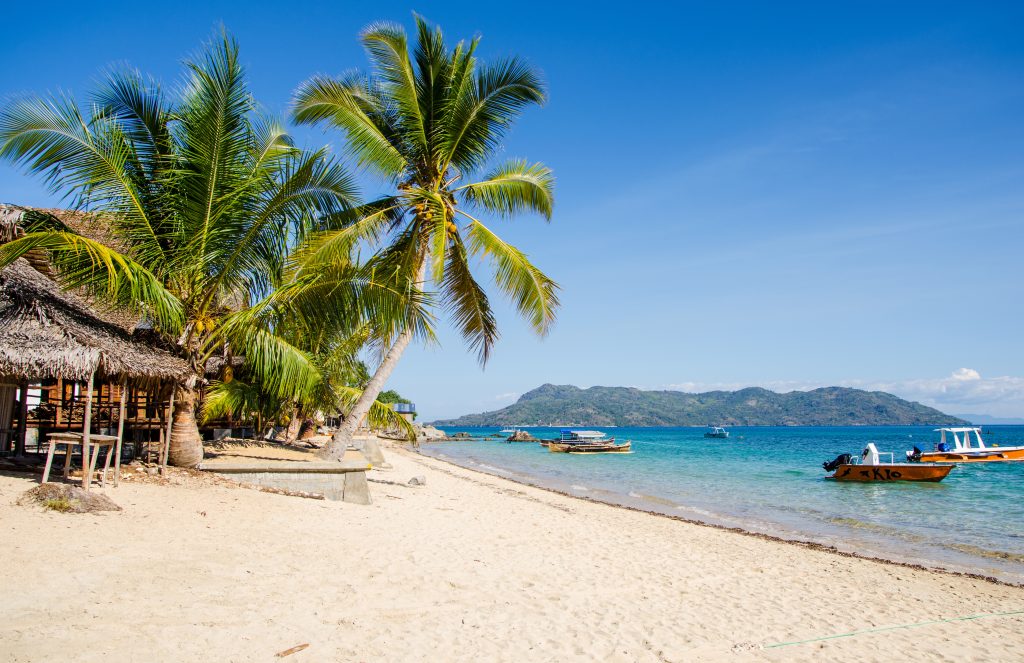
Nosy Be, often hailed as Madagascar’s foremost tropical beach destination, captivates visitors with its blend of natural beauty and cultural richness. This island paradise is not just about the sun, sea, and sand; it offers a unique journey through its aromatic plantations and vibrant local life.
- Natural Attractions and Activities:
- Beaches and Water Sports: Home to beautiful beaches and luxury resorts, Nosy Be offers unrivaled snorkeling and scuba diving opportunities in the Indian Ocean.
- Wildlife Exploration: Hike Nosy Komba to witness black lemurs and exotic flora.
- Fishing and Boating: Enjoy game fishing or a traditional dhow safari around Nosy Be’s archipelago.
- Cultural and Culinary Experiences:
- Local Crafts and Markets: Visit Ampangorina for locally made crafts and the main island’s vibrant market for Madagascar’s famous vanilla.
- Cuisine: Savor a picnic of freshly caught seafood and traditional Malagasy dishes on Nosy Tanikely.
- Historical Insight:
- Colonial History: Explore Hell-Ville to understand Nosy Be’s history since its cession to the French in 1840.
- Agricultural Heritage: Discover the island’s rich agricultural background through its cocoa, ylang-ylang, and vanilla plantations.
Nosy Be’s allure is further enhanced by its mild tropical climate, making it an ideal year-round destination. The dry season, from May to October, is particularly popular for its pleasant temperatures and low rainfall, offering the best conditions for exploring the island’s diverse attractions.
Tsingy De Bemaraha National Park: A Geological Marvel
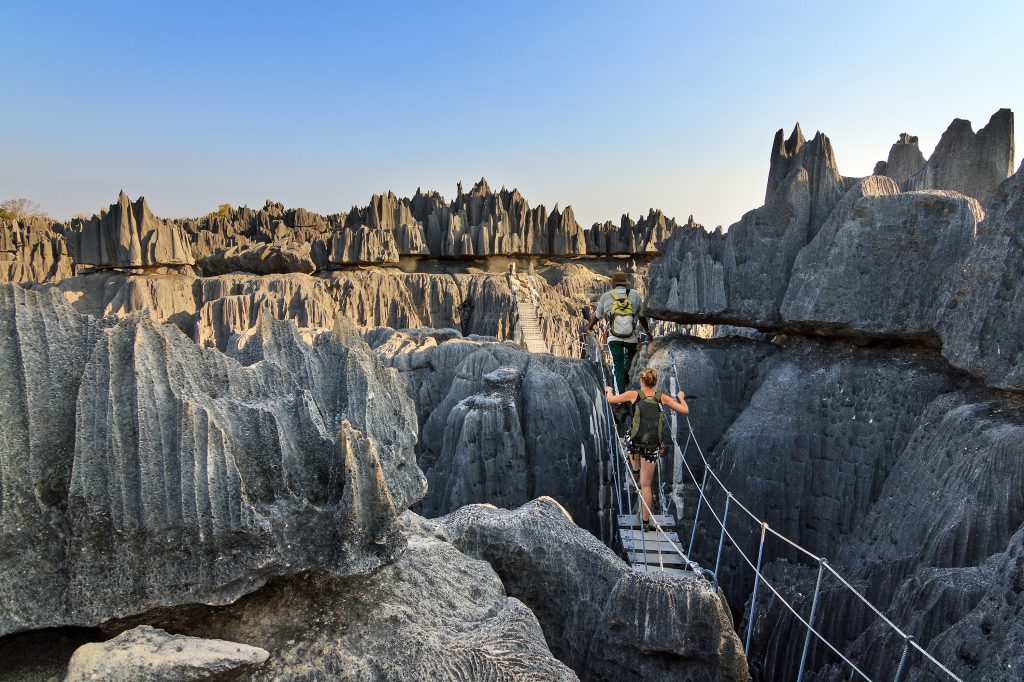
Tsingy de Bemaraha National Park is a testament to nature’s artistry, showcasing an otherworldly landscape of limestone formations known as tsingy. This UNESCO World Heritage Site spans approximately 1,520 square kilometers, offering a sanctuary for a plethora of endemic wildlife and unique vegetation adapted to its harsh terrain.
- Geological Wonders: The park’s landscape is dominated by the Great Tsingy and the Little Tsingy, with razor-sharp limestone pinnacles that tower up to 70 meters high. These formations, created over millions of years through erosion, form a labyrinth of deep canyons and high ridges.
- Biodiversity Hotspot: Tsingy de Bemaraha is home to an array of plant and animal species, many of which are endemic to Madagascar. The park’s unique ecosystems support rare and endangered species, including several species of lemurs, reptiles, and birds, thriving among the limestone needles.
- Adventure and Exploration: Visiting the park is an adventure, requiring guided hikes across suspended bridges, climbing ladders, and navigating narrow passages. Due to its remote location and challenging terrain, planning and hiring a local guide familiar with the park are crucial for a safe exploration.
Tsingy de Bemaraha dramatic landscape challenges visitors to embrace the wild beauty of Madagascar, making it a must-visit for nature lovers and adventure seekers alike.
Ranomafana National Park: A Biodiversity Hotspot
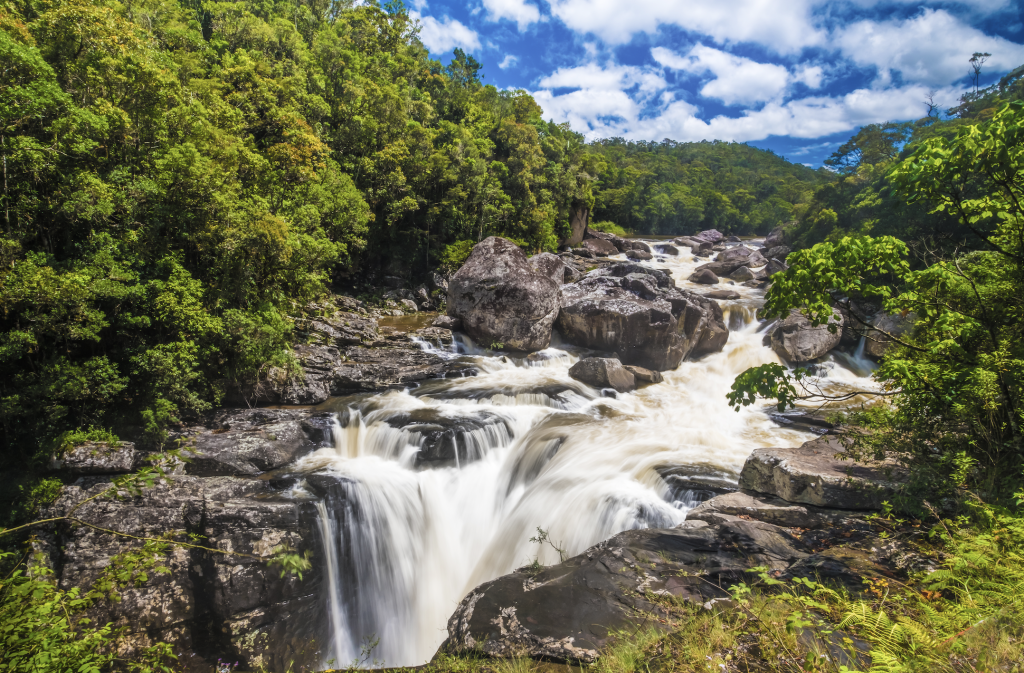
Ranomafana National Park, a beacon of biodiversity in Madagascar, spans 161 square miles of lush tropical rainforest in the southeastern part of the island. Established as a National Park in 1991, this cloud forest is enveloped in low clouds at canopy level, with a dense moss cover adorning the ground and vegetation, creating an ethereal ambiance.
Key Highlights:
- Diverse Fauna: The park is a sanctuary for numerous lemur species, including the endangered golden bamboo lemur, the Milne-Edwards sifaka, and houses over 130 species of frogs, making it a critical habitat for amphibian conservation.
- Avian Species: Bird watchers can delight in spotting ground rollers, blue vangas, and brown mesites among the park’s avian residents, contributing to its status as a birding paradise.
- Flora and Trails: The Sahamalaotra Circuit, renowned for its palm trees like Ravenea madagascariensis and Dypsis catatiana, offers hikers breathtaking vistas and encounters with rare plant species, including the Dypsis robusta in the Ranomafana Arboretum.
Ranomafana National Park’s designation as part of the MISSION GREEN Global Hot Spots underscores its global significance as a biodiversity hotspot and a forest habitat of critical environmental importance. Plans for a state-of-the-art canopy walkway aim to enhance its appeal to ecotourists and researchers alike, promising a closer look at its rich biodiversity.
Conclusion
Madagascar, a treasure trove of biodiversity and cultural heritage, offers a captivating journey through its national parks and unique ecosystems. From the dense forests of Andasibe-Mantadia and the majestic peaks of Isalo, to the serene beauty of Nosy Boraha’s white-sand beaches and the vibrant marine life of the Mozambique Channel, Madagascar beckons as one of the best places for nature and wildlife lovers. The island’s allure is magnified by its endemic species, from ring-tailed lemurs to the myriad bird species and the majestic humpback whales off Île Sainte-Marie, making it a premier destination for eco-tourists and beach lovers alike. Whether exploring the lush rainforests of Masoala National Park, marveling at the rock formations of the Anja Community Reserve, or embarking on a whale watching adventure around Nosy Irnaja, Madagascar offers an unparalleled experience. Amidst this natural splendor, the local culture, from the small fishing villages to the historic royal palace, enriches every visit. As we reflect on the best things to see and do across this largest island, it’s clear Madagascar is a great place not just for adventure but for immersing oneself in a world where nature and culture intertwine, promising unforgettable experiences for all who tread its diverse landscapes.
Read this for more travel destinations: Best Places to Visit in Venice, Italy